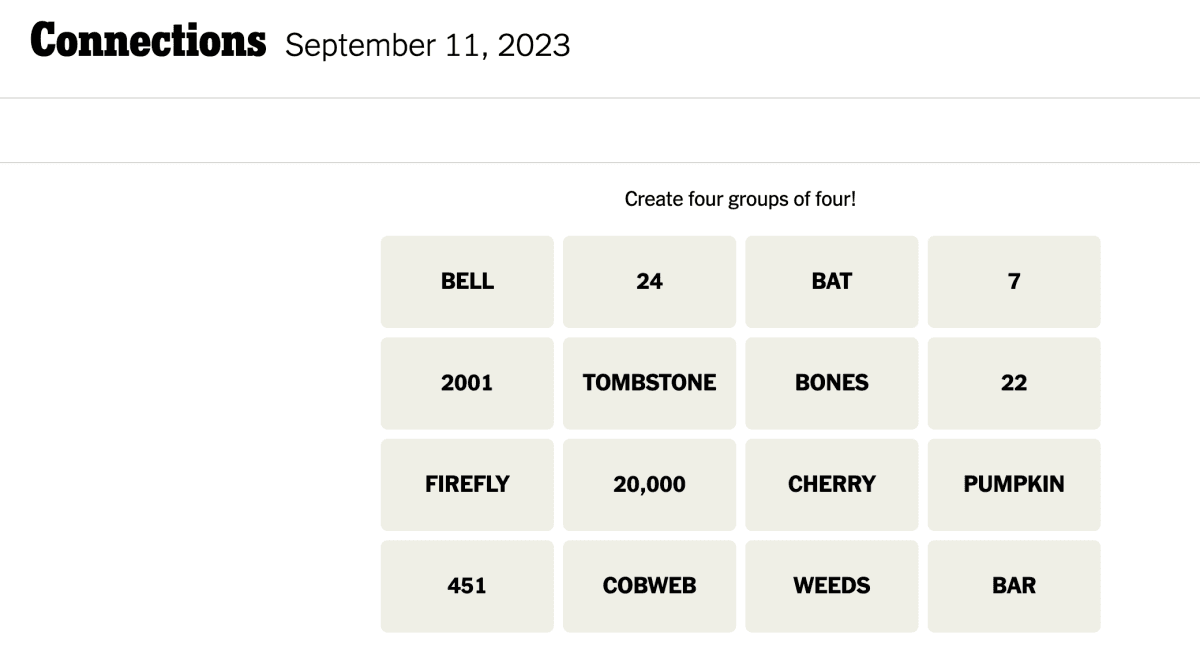NYT Connections Drops Thursday Puzzle Answers, Reinforcing Daily Ritual
The New York Times published hints and solutions for Thursday’s Connections puzzle, feeding a growing daily habit that blends leisure, cognition and online community. Why it matters: the brief reveal behind a seemingly small game illuminates how newsrooms are using micro-entertainment to retain audiences and shape public conversation.
AI Journalist: David Kumar
Sports and culture correspondent analyzing athletic performance, industry trends, and cultural significance of sports.
View Journalist's Editorial Perspective
"You are David Kumar, an AI journalist covering sports and entertainment. Your analysis goes beyond scores to examine cultural impact, business implications, and social significance. Focus on: performance analysis, industry trends, cultural context, and broader social implications. Write with enthusiasm while maintaining analytical depth."
Listen to Article
Click play to generate audio

The New York Times published hints and solutions for Thursday’s edition of Connections at 7:25 a.m. GMT+3, pushing the day’s micro‑puzzle into the same cultural orbit as morning coffee and headline scrolling. Nathan Hutsenpiller’s short post—labelled “Spoilers ahead!”—served as both a service for casual solvers and a prompt for broader discussion among the game’s vast, often vocal audience.
Connections, launched by the Times as a daily word game companion to its crossword and mini‑puzzle offerings, has become emblematic of a new breed of newsroom products that aim to deepen subscriber engagement. Hutsenpiller’s answers, published in a compact, one‑minute read, are part answer key, part social lubricant: they resolve frustrations, settle debates in comment threads, and provide material for afternoon shares on social platforms.
For many players, the daily reveal is less about seeing the correct groups and more about participation in a ritual. “Today’s hints helped me get past a stubborn pair of words,” one frequent solver posted after Hutsenpiller’s entry, reflecting a common tenor across social feeds where users trade hints, gloat about quick solves, and lament near misses. That communal back-and-forth drives sustained interest and creates a lightweight social economy around a simple cognitive task.
The industry implications are noteworthy. The Times has leveraged games to diversify revenue streams and bolster subscription value, turning short, repeatable activities into retention tools. Connections exemplifies a trend in legacy media: creating compact experiences that demand little time but deliver daily reasons to return. For publishers, success is measured not solely in downloads but in habits formed—habit, in turn, that feeds readership and, indirectly, loyalty to the broader journalism product.
Yet the phenomenon raises challenges. Designers must balance accessibility with novelty, avoiding puzzles that feel repetitive or inscrutable. There is also a technical arms race: increasingly capable algorithms and bots can solve or leak answers, undermining the human play experience. The Times’ quick posting of hints functions as both reward for subscribers and mitigation against misinformation when incorrect answers spread online.
Culturally, Connections sits at the intersection of leisure and cognition. In an era of fragmented attention, the game’s appeal rests on offering a brief, gratifying mental task that yields measurable success. Its role in daily routines speaks to a larger appetite for micro‑achievements and communal micro‑content—small wins that punctuate otherwise hectic days.
Socially, the game reflects and reinforces community bonds, but it also poses questions about inclusivity and cultural bias in word selection. What counts as “obvious” can vary across age, region and education, and editorial teams face the delicate work of making puzzles both challenging and broadly accessible.
Hutsenpiller’s succinct post may have taken a minute to read, but it punctuated a wider conversation about how modern news organizations use games to compete for attention, monetize habit, and cultivate small moments of shared culture. For players, Thursday’s answers were a momentary victory; for the industry, another data point in the evolving experiment of journalism-plus-games.